Being a good boss is more than just holding a title; it’s a role that demands a combination of leadership skills, emotional intelligence, and a true dedication to the well-being and success of your team. In today’s fast-paced business world, managing people effectively is essential for the long-term success of any organization, whether it’s a small business or a large corporation.
As an owner of multiple businesses, I am not simply a manager of my team; I am a leader who inspires, motivates, and empowers them to perform at their best. If you aspire to become a better boss and think like a leader, it starts with mastering the key qualities that set exceptional leaders apart from average managers.
I provide effective leadership that involves fostering a culture where my employees feel valued, supported, and encouraged to grow. I strive to be an outstanding boss who strikes a balance between business goals and my team’s needs, cultivating an environment of trust, respect, and open communication.
This article will delve into the essential traits and practices that can help you become not just a good boss, but a great leader, ensuring your team stays motivated, productive, and aligned with common goals.
Developing Effective Communication Skills
Fostering Open Communication
Fostering open communication is a vital component of building strong relationships within a team. It involves creating an environment where team members feel comfortable sharing their thoughts, ideas, and concerns freely. This open dialogue encourages collaboration and ensures that everyone feels heard.
Practicing active listening is important in this process. By paying attention to verbal and non-verbal cues, and showing empathy, you demonstrate that you genuinely care about understanding others’ perspectives. This not only builds trust but also helps in maintaining a collaborative atmosphere, whether you’re communicating in person, virtually, or in a hybrid setting.
Adaptability is another key element. Effective communication requires being able to adjust your style to suit different audiences and situations. Whether you’re addressing a team member, a boss, or another stakeholder, showing adaptability ensures your message is delivered clearly and thoughtfully.
Clarity and Honesty in Messaging
Clarity is the backbone of effective communication. A good leader ensures that messages are straightforward and easily understood, avoiding jargon and ambiguities that could lead to misunderstandings.
By demystifying the decision-making process and clearly explaining the reasons behind decisions, you empower your team to work cohesively toward shared goals with heightened efficiency and productivity. Honesty and integrity are equally important in this process.
Consistent and honest communication builds credibility and trust over time. When your words match your actions, you reinforce your message and maintain the trust of your team. This transparency helps in reducing ambiguity and mitigating the risk of misunderstandings, which can otherwise derail progress.
In times of change or challenge, clear and honest communication becomes a guiding beacon, offering reassurance and direction. By conveying a compelling vision and motivating others to engage and take action toward shared goals, you inspire your team to work together toward success.
Empowering and Supporting Your Team
Delegating with Trust
Delegating tasks effectively is a cornerstone of empowering your team. When you delegate, you are not merely offloading work; you are entrusting your team members with responsibilities that align with their strengths and skills. This trust is foundational for building a cohesive and productive team.
To delegate with trust, start by carefully selecting the right person for the job, ensuring the task matches their expertise and interests. Effective delegation requires providing the necessary information and context for the task, then stepping back to allow the team member to take ownership. This means practicing the art of letting go and avoiding micromanagement, which can stifle creativity and motivation.
By granting your team members the autonomy to complete tasks as they see fit, you demonstrate confidence in their abilities and foster a sense of responsibility and accountability. It’s equally important to maintain open lines of communication throughout the delegation process. Be available to answer questions, provide support when needed, and offer constructive feedback that helps team members grow and improve.
Trusting your team to handle delegated tasks not only reduces your workload but also enhances their skills and job satisfaction.
Providing Growth Opportunities
Empowering your team also involves creating opportunities for growth and development. This can be achieved through various forms of delegation and mentorship. For example, assigning a senior employee to train new hires not only reinforces their expertise but also provides new team members with structured guidance and support.
Cross-functional collaboration is another powerful tool for growth. By assigning different sections of a project to various team members, you leverage expertise from multiple departments, ensuring a comprehensive and high-quality final product.
This approach not only enhances the project’s outcome but also broadens the skill sets of your team members as they learn from each other. Additionally, delegating recurring or developmental tasks helps team members build new skills and take on more significant responsibilities over time.
Ask yourself if a task presents an opportunity for someone else to grow and develop their skills. This strategic approach to delegation ensures your team is constantly evolving and improving, which is essential for the long-term success of your business.
Leading by Example
Maintaining Professionalism and Ethical Standards
Leading by example is fundamentally about setting the right standards for your team. This includes maintaining a high level of professionalism and adhering to ethical standards in all your actions. When you demonstrate professionalism, you create an environment where your team members are inspired to do the same.
This involves being punctual, respectful, and consistent in your behavior and decision-making processes. Ethical leadership is also important.
Leaders like Tim Cook of Apple have shown that championing ethical practices, such as advocating for privacy, sustainability, and responsible supply chain practices, can significantly impact the culture of an organization. By prioritizing ethical behavior, you set a clear benchmark for what is acceptable and what is not, influencing your team to follow suit.
Moreover, your actions serve as an unspoken standard for the entire organization. If you maintain high ethical and professional standards, your team is more likely to emulate these behaviors, creating a cohesive and reputable work environment.
Inspiring and Motivating
Inspiring and motivating your team is another key aspect of leading by example. When you model the behavior you want to see in your team, you inspire them to follow your lead. This involves getting involved in your team’s initiatives, showing that you value their work, and understanding their contributions.
By leading from the front rather than the sidelines, you demonstrate your commitment and support, which can significantly boost team morale and engagement. Motivation also comes from seeing leaders who are passionate and dedicated to their work. When you give your best, communicate well, and perform at high levels, you set a powerful example that encourages your team to do the same.
This approach not only increases productivity but also fosters a culture of accountability and teamwork. Additionally, recognizing and appreciating the efforts of your team members can be a potent motivator.
By acknowledging their hard work and achievements, you show that their contributions are valued, which can lead to higher levels of engagement, loyalty, and retention within the team.
Conclusion
To be a good boss and think like a leader, it is important to remember a few key principles. Effective communication is the foundation, involving open dialogue, clarity, and honesty. Empowering your team through delegation and providing growth opportunities fosters a culture of trust and development.
Leading by example—by maintaining professionalism and ethical standards—and inspiring your team through your actions sets the tone for a positive and productive work environment. By implementing these strategies, you can create a team that is motivated, engaged, and committed to achieving common goals.
Remember, leadership is about inspiring and empowering others, so take the time to develop these skills and watch your team thrive. Start making these changes today to become a better boss and a great leader.
FAQ
How do you define effective leadership, and why is it important in a team or organization?
Effective leadership is the ability to influence and support a team, fostering trust, respect, and collaboration. It involves traits like vision, communication, integrity, courage, and self-awareness. Effective leaders inspire and guide others, aligning the team towards a common goal. This is essential for driving innovation, maintaining motivation, and achieving long-term success.
Describe a situation when you successfully motivated and encouraged your team to achieve a challenging goal.
In a situation where the team faced a tight project deadline, I successfully motivated them by sharing a clear vision and setting measurable goals. Through regular communication, recognizing achievements, and providing the right support and flexibility, I helped maintain morale and fostered collaboration. These efforts resulted in the successful completion of the project.
How do you handle conflicts or disagreements within your team or among colleagues?
To handle conflicts, I encourage open and honest communication to address issues early. I bring involved parties together to discuss and find mutually beneficial solutions through collaborative problem-solving and mediation. By focusing on the problem rather than the individuals, I work to identify common goals and points of agreement.
How do you create a compelling vision and set clear goals to align your team toward a shared purpose?
To create a compelling vision and set clear goals, I involve the team in defining core values, purpose, and mission. I assess the current reality and envision the desired future state. By gathering insights from stakeholders, building consensus, and articulating a clear strategy with short-term, achievable goals, I ensure alignment and shared understanding.
Facilitator-led sessions are also used to foster alignment and a shared sense of purpose.







